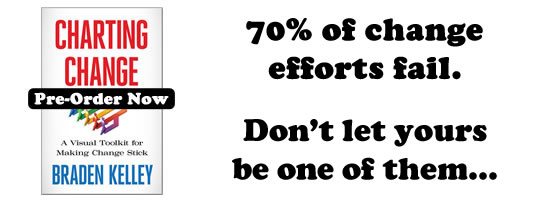Innovations in Fintech
 Taking Us Back to the Good Ol’ Days of Friendly Bankers
Taking Us Back to the Good Ol’ Days of Friendly Bankers
Technology automation tends to have two phases: In the first phase, automation replaces human decision-making and process with an inflexible set of rules, often creating new problems even as it solves old ones, and shutting out those who may be outliers or may be “exceptions to the rule.†But the next phase is where the innovation really kicks in, and this is when that automation becomes intelligent, data-rich, and capable of actually making rational decisions that improve and enhance the level of customer service and open up new opportunities for the business that could not have existed previously.
Such is the case with the latest iterations of fintech. There are those of us who pine for the days of George Bailey, portrayed by the legendary Jimmy Stewart in “It’s a Wonderful Life.†It was a time when bankers were friendly and had a lot of discretion on whether or not to issue a loan. An applicant may have more than their share of black marks, but if ol’ George vouched for them because they go to the Moose Lodge together, then the loan gets issued. Sure, you filled out the application, but applying for a loan also meant having your lodge brothers put in a good word for you, putting on your best suit and pleading your case in person, and maybe even having George and his wife over for dinner the night before. Today, none of that makes any difference, and next-generation online lenders have gone out of their way to drive home that point, with television commercials like the one with the Lending Tree puppet wearing his boxers while applying for a loan.
It’s more data, not friendlier bankers, that let in the outliers
The old system did allow for discretion on the part of the loan officer, but the obvious downside was that if you didn’t know the secret handshake, you may not see the benefit of that discretion. While it included some, for others, it was exclusionary.
Then automated underwriting took hold. A color-blind system that simply ranked applicants based on the numbers, it was designed to be fair – but at the same time, it took away that discretion and still left some deserving applicants out in the cold. Today, fintech has ushered in the second phase of automation – the innovation phase – in the banking world. According to West Monroe Partners’ Managing Director Gil Mermelstein, the path to a more efficient – and a more discretionary – lending environment isn’t necessarily letting loan officers have more discretion, it’s in adding more data from newer sources, and better leveraging that data. “It’s still very automated,†said Mermelstein. “But there are different business rules that are much more flexible and smart than in the past. And that’s generated an opportunity for banks, as well as opening more credit to different segments of customers that were previously shut out.”
Big data and analytics are also allowing greater innovation in banking in terms of opening more doors for traditionally underserved populations. Consumer lenders have long sought ways to penetrate “thin file†customers. These are, according to Mermelstein, “customers you don’t have a lot of background on, they don’t have great credit bureau information, or somebody that is underbanked and outside of the system. That’s a segment that banks were looking for ways to add more knowledge and informed decisions around, and now they can. This is a whole new segment of customers, and they’re not necessarily subprime, you just have information sources that you didn’t have previously.â€
Companies like KreditFix for example, focus on providing a high-tech solution to individuals and businesses by taking variables from non-traditional sources to create a view of risk, potentially opening up credit to populations that did not have access before. Still others like Amber Financial allow lenders to serve recent immigrants who might not qualify for loans due to a thin credit file by looking outside local credit bureaus to take into account other identifiable assets in their home countries.
“Online, non-bank organizations have stepped in to fill gaps that traditional lenders have not filled,†said Brian Sheppard, founder of ApprovedMoney.com, an online provider of registration loans. “Where mainstream lenders have moved away from smaller-value, asset-based loans over the past several years, there is still a serious need for this type of product, which allows underserved, unbanked, or credit challenged consumers to have access to reasonably-priced loan products.â€
Non-bank and online lenders drive innovation
Contrasting with the flexibility of intelligent automation is a whole new category of online lenders which bypass banks entirely, and let individual investors call the shots themselves about who they want to lend money to. Combining fintech that includes sophisticated transactional websites with personalized decision-making, peer-to-peer platforms like LendFu are taking fintech in an entirely different direction, automating the back end and the process end of the transaction while retaining the highly personalized decision-making of the George Bailey days. “Newer platforms today are allowing providers outside of the traditional banking community to push the industry towards higher levels of engagement and more flexible decisions,†said Aaron Ledbetter, CEO and founder of LendFu. “These newer online platforms also mitigate the narrowing of offers we’ve seen from traditional banks, by providing a wider range of options to consumers. Alternative, fintech-driven platforms like peer-to-peer lending represent a new direction for finance, and a great benefit to consumers everywhere.â€
“The great innovation in fintech today is that lenders are using technology not to avoid personal connection, but to enhance it, and to add a new level of flexibility and customer experience to the lending process,†said Amas Tenumah, founder of customer experience consultancy BetterXperience. “Banks and non-bank lenders alike are going in the right direction by leveraging the best of fintech to use automation, big data, and analytics in ways that allow consumers to have the personal connection with lenders, along with the convenience of automation.â€
Today fintech is having a positive impact in several ways – naturally, it brings more efficiency to banks and non-bank lenders, but the greatest benefit accrues to consumers, who now have more options and the ability to take advantage of lending options that were never before available.
image credit: badattitudes.com
Wait! Before you go…
Choose how you want the latest innovation content delivered to you:
- Daily — RSS Feed — Email — Twitter — Facebook — Linkedin Today
- Weekly — Email Newsletter — Free Magazine — Linkedin Group
 Dan Blacharski is senior contributing analyst at Compass Intelligence, a market acceleration research and consulting firm; and the founder and senior PR counsel at Ugly Dog Media, a thought leadership, and public relations consultancy. Follow @Dan_Blacharski
Dan Blacharski is senior contributing analyst at Compass Intelligence, a market acceleration research and consulting firm; and the founder and senior PR counsel at Ugly Dog Media, a thought leadership, and public relations consultancy. Follow @Dan_Blacharski
NEVER MISS ANOTHER NEWSLETTER!
LATEST BLOGS
Three things you didn’t know about credit cards
Photo by Ales Nesetril on Unsplash Many of us use credit cards regularly. From using them for everyday purchases to…
Read MoreFive CV skills of a business-minded individual
Photo by Scott Graham on Unsplash The skills listed on a CV help employers quickly understand your suitability for a…
Read More


